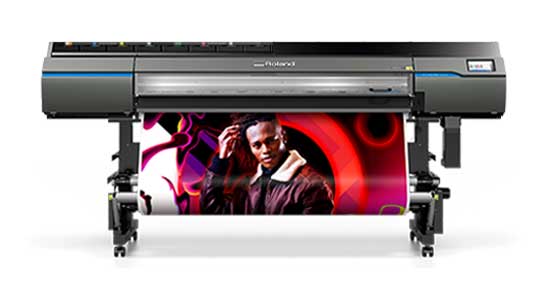Digital Printing Things To Know Before You Buy
Digital Printing Things To Know Before You Buy
Blog Article
Rumored Buzz on Digital Printing
Table of Contents8 Easy Facts About Digital Printing ShownUnknown Facts About Digital PrintingAbout Digital PrintingDigital Printing - An OverviewThe Best Guide To Digital PrintingEverything about Digital PrintingDigital Printing - The FactsDigital Printing Can Be Fun For Anyone
Customization also allows businesses to stick out in a congested market by producing distinct marketing materials that separate them from their competitors. Among the major advantages of digital printing is the ability to publish variable information. Each printed piece can be one-of-a-kind, permitting services to produce personalized advertising and marketing products that speak directly to their target market.Digital printing likewise allows for customization in the layout of advertising products. With digital printing, organizations can produce designs that are one-of-a-kind and customized to their specific demands. This can include customized graphics, typefaces, and designs that can aid to distinguish them from their competitors. An additional advantage of digital printing is the ability to print on demand.
Digital Printing - The Facts
By publishing smaller sized amounts of advertising and marketing products, businesses can decrease waste and avoid the requirement for excess stock. Digital printing is likewise flexible.
By using different materials and formats, companies can create distinct advertising and marketing products that attract attention from their rivals and bring in interest from their target market. Digital printing likewise provides consistency. With traditional printing methods, there is frequently variation in between prints as a result of distinctions in ink protection, pressure, and other variables.
This uniformity can assist develop customer trust and reliability, showing that business is committed to supplying premium products. Uniformity is specifically crucial for companies that wish to construct client count on and credibility. By making certain that every print is regular, companies can show that they are committed to offering top quality products and taking notice of the information.
Some Known Details About Digital Printing

Additionally, electronic printing generates less waste because it can print as needed and in smaller sized quantities, reducing the requirement for excess supply and products. Digital printing also uses less energy compared to standard printing approaches. Digital printers do not call for as much power to run, as they do not require to warm up as a lot or make use of as much power to run.
Some Known Questions About Digital Printing.

Offset printing needs a plate for each and every color published. Traditional balanced out printing is a print approach that uses light weight aluminum plates to transfer ink onto a rubber sheet (commonly described as a "blanket"). The picture is then rolled onto the printing surface area. This printing method is content thought about "countered" because the ink is not moved to the paper straight.
See This Report about Digital Printing
Offset printing permits for a large variety of print materials to be made use of during production. The premium pictures generated via offset printing make it the preferred approach, particularly among visuals designers, when looking for the greatest shade reproduction, information, and professional-looking prints.
For digital inkjet printing, ink is moved directly onto the surface area. Instead than depending on light weight aluminum plates and rubber blankets to transfer a photo, digital printing utilizes fluid ink during manufacturing.
4 Simple Techniques For Digital Printing
Better color integrity describes both the precision of the shades and their equilibrium in the design. Because balanced out printing can blend custom color inks for each task, it will naturally obtain the shades spot-on. Functions similarly well on virtually any kind of kind of material. Trusted, superior image quality. Rely on balanced out printing for clean, unique types and pictures without streaks or spots.
It costs a whole lot to begin a countered work. You have to spend cash right into producing the plates, which takes time. However, as soon as you have actually spent it, all of the materials are all set to go, and you'll invest less on big offset work than an electronic print, which is regarding the same per item regardless of how large the work obtains.
Digital printing is less expensive for low-volume work. The price per system goes down for digital printing, so at some factor, they crisscross. Altering information within a single print task.
The Best Strategy To Use For Digital Printing
While electronic printing or inkjet printing is the favored option in the present times, there are compelling factors to transform from balanced out to digital printing systems. When printing offset or digitally, critical decisions and procedures are entailed in shade matching.
Industrial inkjet printing provides versatility for printing on many different substrates. Digital printing is ideal for consumers that do not need longer runs and warehousing materials.

One benefit of digital printing is selecting from a vast array of digital substratums. With offset printing, substrates comprise, read the article generally, 30% of the cost of the task. With electronic printing, the price of the substrate in the general task is tiny. This permits more options than in the past, and that's good for marketing experts and businesses.
The 4-Minute Rule for Digital Printing
drop-on-demand is the 2nd printing modern technology to take into consideration. Continual inkjet systems need considerable maintenance, more driver training, and greater downtime. Equipment costs in inkjet printing are much lower than offset printing as there are no plate-making, plates, and press expenses. Past the funding expense, the prepress equipment and printing machine need highly experienced operators in countered printing, which adds labor prices.
Report this page